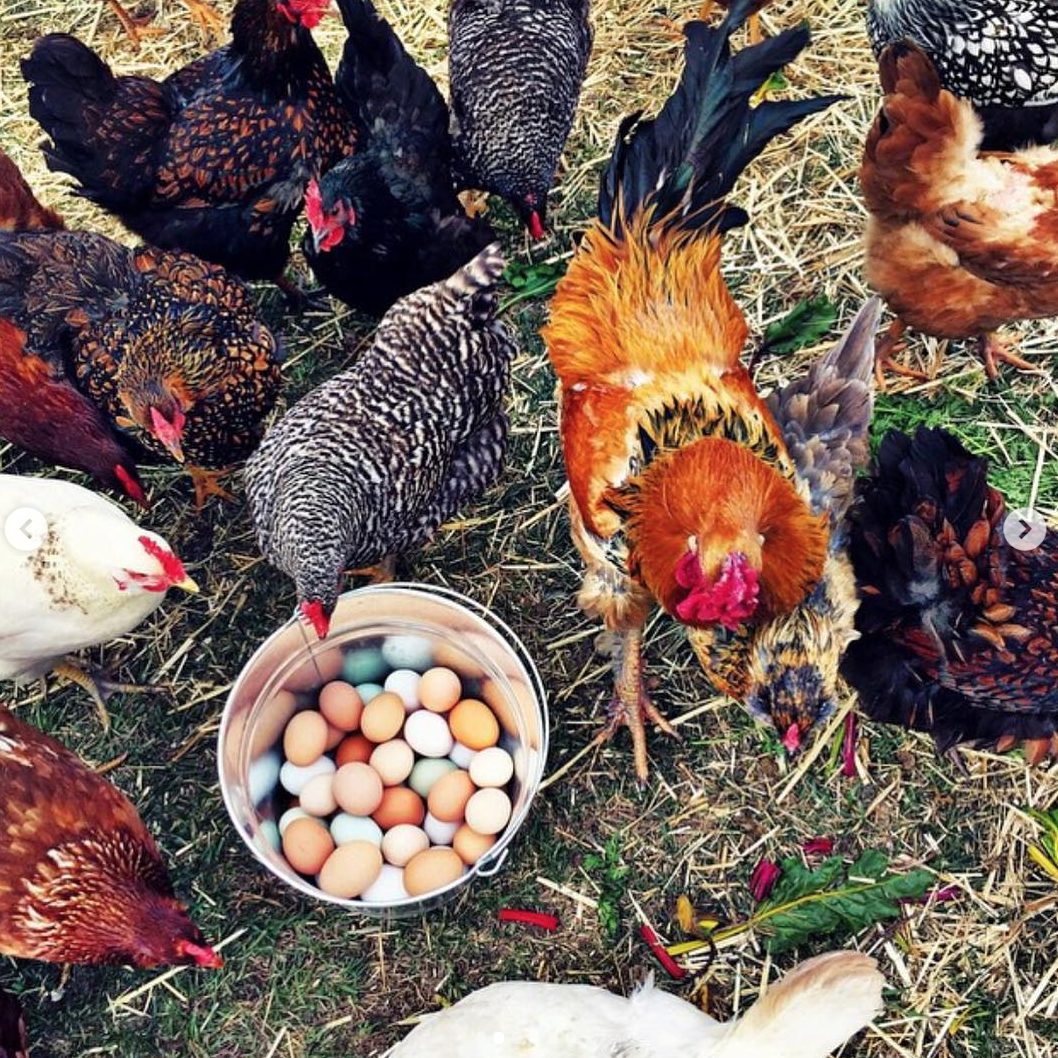INTERESTING FACTS ABOUT CHICKENS & FREE-RANGE EGGS!
INTERESTING FACTS ABOUT CHICKENS & FREE-RANGE EGGS!
November days are when we start to see fewer eggs - but our hens are still giving us some beauties out here! During the spring and summer this basket would be full, but when the hours of daylight decrease it tells the chickens it’s time to rest.
They “molt” or loose their old feathers and grow pretty new ones in autumn and their energy production goes more towards that than making an egg everyday.
You can add artificial lights in the coop to tell their rhythms to keep producing eggs, but it’s important to give their bodies this natural time to rest. Producing an egg almost everyday is a lot of work!
Our chickens are totally free range and wander all over the ranch during the day finding grubs and snacking on feed and alfalfa that the livestock leave behind (alfalfa actually has a natural protein pigment in it called xanthophyllus, a beta-carotene, that helps give those yolks a vibrant orange color!) - swipe to see the variation in yolk colors and just how dark orange they can get.
They tuck themselves in the rafters of the barn loft at night and we rarely have a predator attack our chickens, maybe because they have room to run away and can’t get easily cornered in a coop.
Different breeds of chickens lay different color eggs, and our hens breed naturally with the roosters so we have some cross breeds that give really unusual colored eggs. You can actually tell what color eggs a chicken will lay from its earlobes, or so they say!
They come in different shapes and sizes depending on where the chicken is in it’s life cycle (younger birds lay smaller eggs - older birds start to lay less frequently but bigger eggs)
These eggs are going in our fridge (or sometimes just on the kitchen counter! You only need to refrigerate eggs if they have been washed and lost their natural antibacterial bloom) and the rest to the restaurant for our famous “Loaded Deviled Eggs”!

